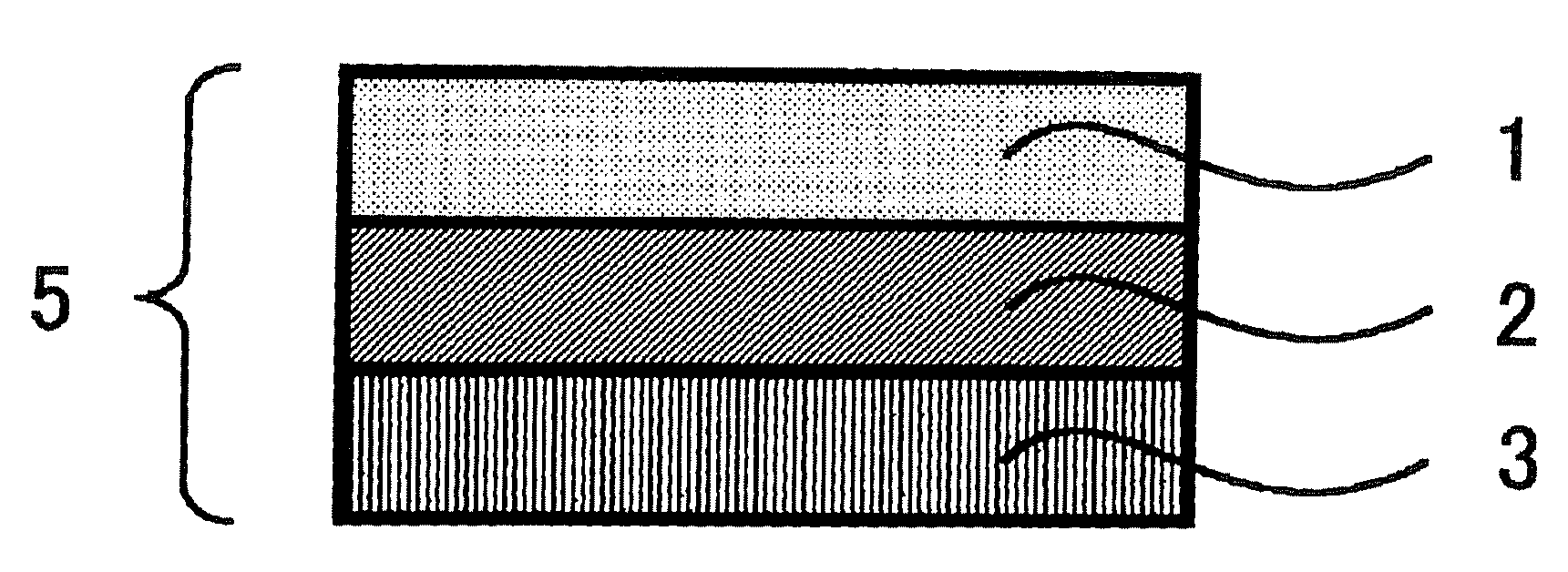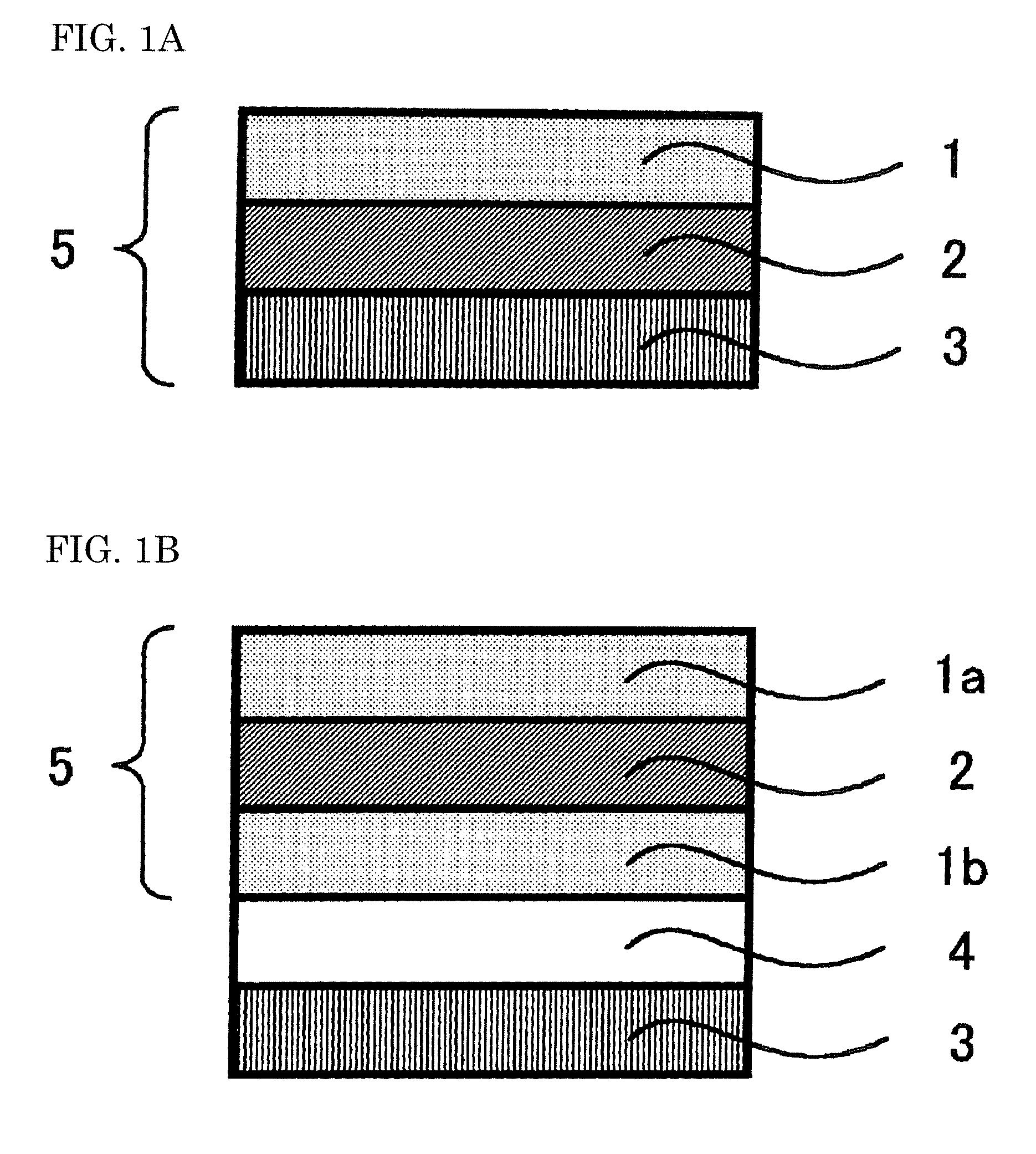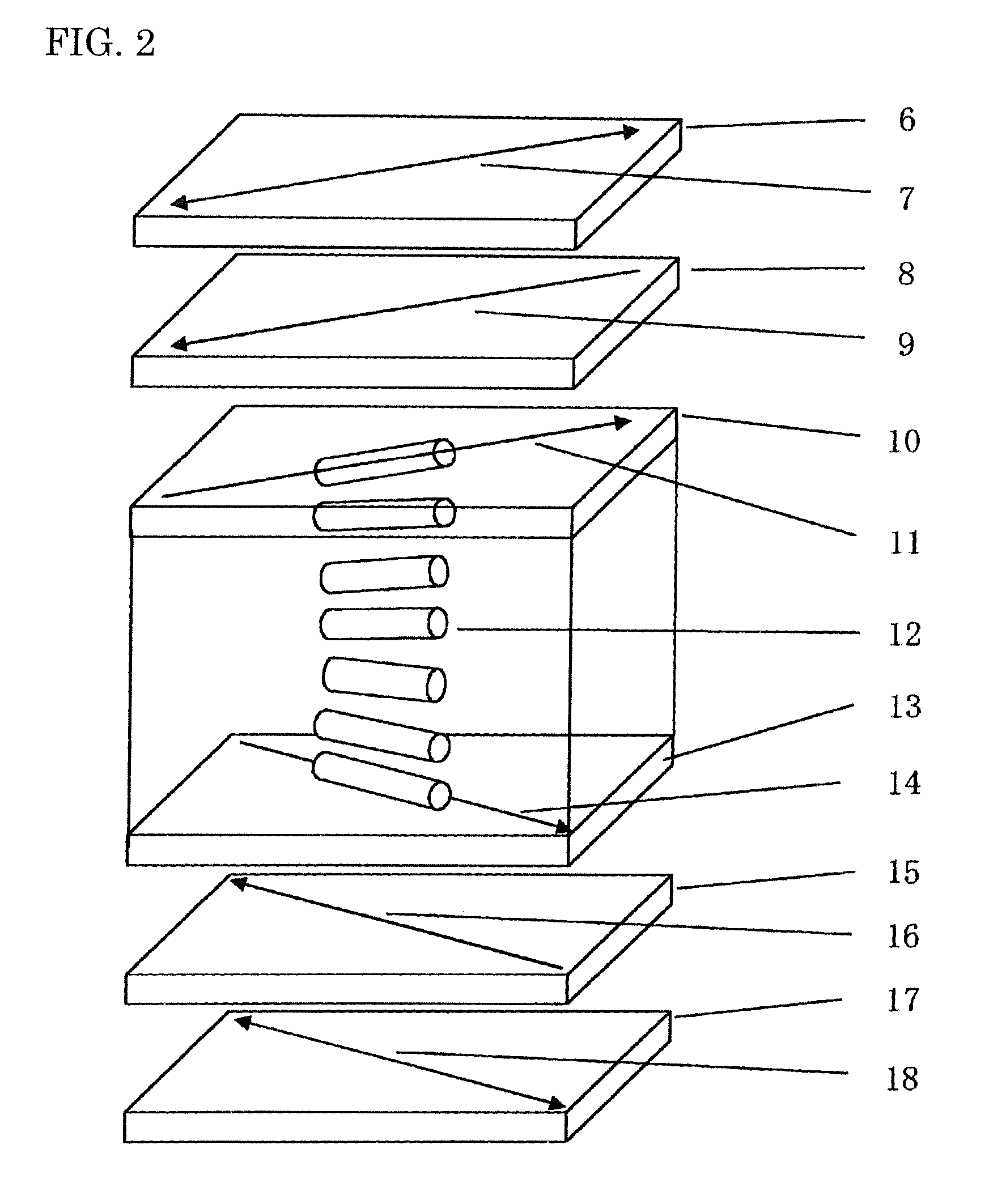Polymer film, process for producing the same, and polarizing plate and liquid crystal display using the same
a technology of polymer film and liquid crystal display, which is applied in the field of polymer film, can solve the problems of difficult control of the polarizing plate or the handling properties of the polarizing plate in rolled state, and achieve the effect of excellent processing aptitud
- Summary
- Abstract
- Description
- Claims
- Application Information
AI Technical Summary
Benefits of technology
Problems solved by technology
Method used
Image
Examples
example 1-1
Preparation of Cellulose Acetate Film (CAF-1)
[Preparation of Cellulose Acetate Stock Solution (CAL-1)]
[0311]The following composition was thrown into a mixing tank and stirred to dissolve the respective components, thereby preparing a cellulose acetate stock solution (CAL-1).
[Composition of cellulose acetate stock solution (CAL-1)]Cellulose acetate (acetylation degree: 2.83):100.0 parts by massTriphenyl phosphate (plasticizer, hereinafter 7.0 parts by massreferred to as “TPP”):Biphenyl phosphate (plasticizer, hereinafter 3.5 parts by massreferred to as “BDP”):Methylene chloride (first solvent):425.0 parts by massMethanol (second solvent): 37.0 parts by mass
[Preparation of Matting Agent Solution (Ma-1)]
[0312]The following composition was thrown into a dispersing machine and stirred to dissolve the respective components, thereby preparing a matting agent solution (Ma-1).
[Composition of matting agent solution (Ma-1)]Silica particle having an average particle 2.0 parts by masssize of 20...
examples 1-2 to 1-12
Preparation of Cellulose Acetate Films (CAF-2) to (CAF-12)
[0316]Cellulose acetate films (CAF-2) to (CAF-12) were prepared in the same manner as in Example 1-1, except that in the preparation of the cellulose film (CAF-1), the composition of the dope solvent, the kind of cellulose acetate, the kind and addition amount of the additive and the stretching condition were changed as shown in Tables 1 and 2.
examples 2-1 to 2-12
and Comparative Examples 2-1 to 2-6
Saponification Treatment of Cellulose Acetate Film
[0327]Each of the cellulose acetate films as prepared in the foregoing Examples 1-1 to 1-12 and Comparative Examples 1-1 to 1-5 was dipped in 1.4 moles / L of a sodium hydroxide aqueous solution at 55° C. for 2 minutes, washed in a water washing bath at room temperature and then neutralized with 0.05 moles / L of sulfuric acid at 30° C. Next, the resulting film was again washed in a water washing bath at room temperature and further dried by warm air at 110° C. The surface of each of the cellulose acetate films was thus saponified.
[0328]Also, each of commercially available cellulose acetate films, FUJITAC TD80UF and FUJITAC T40UZ (all of which are manufactured by Fujifilm Corporation) was saponified under the same condition and provided for the following preparation of a polarizing plate sample.
[Preparation of Polarizer]
[0329]A polarizer was prepared by adsorbing iodine on a stretched PVA film, and the ...
PUM
| Property | Measurement | Unit |
|---|---|---|
| wavelength | aaaaa | aaaaa |
| thickness | aaaaa | aaaaa |
| thickness | aaaaa | aaaaa |
Abstract
Description
Claims
Application Information
 Login to View More
Login to View More - R&D
- Intellectual Property
- Life Sciences
- Materials
- Tech Scout
- Unparalleled Data Quality
- Higher Quality Content
- 60% Fewer Hallucinations
Browse by: Latest US Patents, China's latest patents, Technical Efficacy Thesaurus, Application Domain, Technology Topic, Popular Technical Reports.
© 2025 PatSnap. All rights reserved.Legal|Privacy policy|Modern Slavery Act Transparency Statement|Sitemap|About US| Contact US: help@patsnap.com



